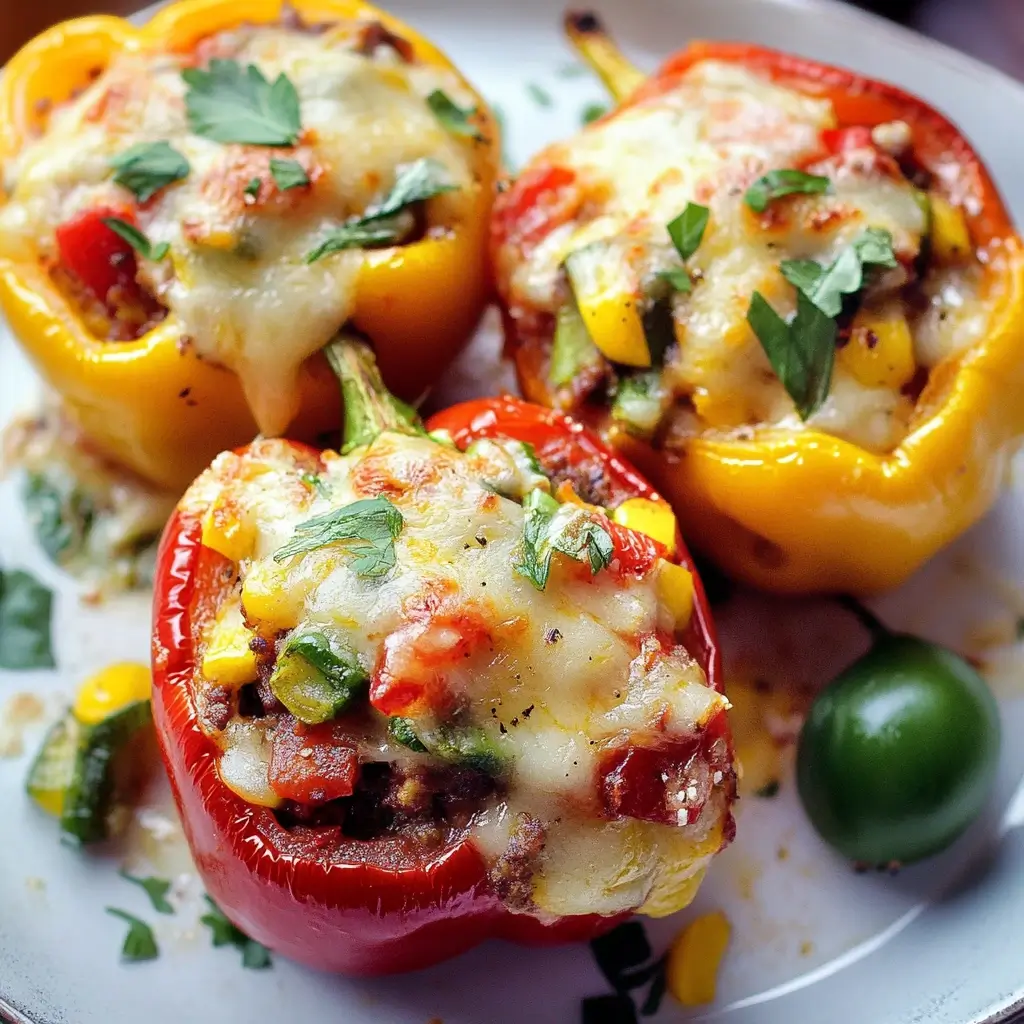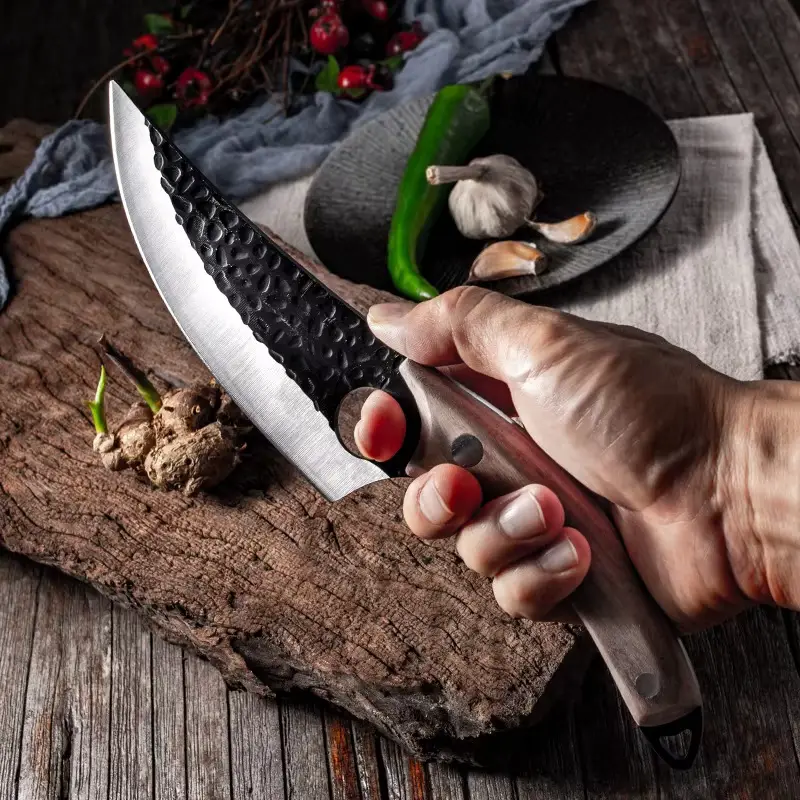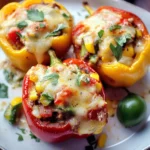It’s funny how some recipes just become staples in your kitchen. Veggie-stuffed peppers are absolutely one of those for us. Initially, I was looking for a way to incorporate more vegetables into our dinners – something beyond the usual steamed broccoli or side salad. I stumbled upon a basic stuffed pepper recipe and, after a few tweaks to suit our tastes, it quickly became a family favorite. Even my kids, who can be notoriously picky about vegetables, devour these! There’s something inherently satisfying about biting into a tender, slightly sweet bell pepper bursting with a savory, flavorful vegetable filling. We’ve made them countless times now, experimenting with different grains and vegetable combinations, but this classic version, with rice and a medley of colorful veggies, remains our go-to. It’s a comforting, healthy, and surprisingly easy meal that’s perfect for a weeknight dinner or even a casual weekend gathering. Plus, the vibrant colors just make it look so appealing on the plate! If you’re looking for a dish that’s both nutritious and delicious, and guaranteed to please even the vegetable-skeptics in your life, you absolutely have to try these classic veggie-stuffed peppers.
Ingredients for Classic Veggie-Stuffed Peppers
- Bell Peppers: 6 large bell peppers, any color (red, yellow, orange, or green) – These form the edible bowls for our flavorful filling. Choose firm, evenly shaped peppers for the best presentation and stability.
- Cooked Rice: 1 ½ cups cooked rice (white or brown) – Rice provides a hearty base for the stuffing, adding texture and substance. Brown rice offers a nuttier flavor and more fiber. Make sure the rice is cooked and slightly cooled before using.
- Onion: 1 medium yellow onion, diced – Onions are a foundational flavor builder, adding a savory depth to the filling. Diced onions cook down and become sweet and aromatic.
- Carrots: 2 medium carrots, diced – Carrots contribute sweetness and a vibrant color to the filling, as well as a slightly firm texture that contrasts nicely with the softer peppers and rice.
- Celery: 2 stalks celery, diced – Celery adds a subtle herbaceous note and a pleasant crunch to the stuffing. It complements the other vegetables and enhances the overall flavor profile.
- Zucchini: 1 medium zucchini, diced – Zucchini adds a mild, slightly sweet flavor and a tender texture to the filling. It blends well with other vegetables and adds moisture to the stuffing.
- Corn: 1 cup frozen or canned corn kernels, drained – Corn brings a pop of sweetness and a juicy texture to the filling. Frozen corn is ideal, but canned corn, well-drained, works in a pinch.
- Black Beans: 1 can (15 ounces) black beans, rinsed and drained – Black beans add protein and fiber to the dish, making it more satisfying and nutritionally balanced. They also contribute a slightly earthy flavor.
- Tomato Sauce: 1 (15 ounce) can tomato sauce – Tomato sauce provides moisture and a rich, savory tomato flavor that ties all the filling ingredients together. It also creates a nice sauce around the peppers as they bake.
- Italian Seasoning: 2 teaspoons Italian seasoning – This blend of herbs like oregano, basil, rosemary, and thyme adds a classic Italian flavor profile to the stuffed peppers, enhancing the overall taste.
- Garlic Powder: 1 teaspoon garlic powder – Garlic powder provides a consistent garlic flavor throughout the filling, adding a savory and aromatic element.
- Salt: 1 teaspoon salt, or to taste – Salt is essential for enhancing the flavors of all the ingredients. Seasoning the filling properly is key to a delicious final dish.
- Black Pepper: ½ teaspoon black pepper, or to taste – Black pepper adds a subtle spice and depth of flavor. Freshly ground black pepper is always preferred for the best taste.
- Olive Oil: 2 tablespoons olive oil – Olive oil is used for sautéing the vegetables, adding healthy fats and enhancing the flavor of the vegetables as they cook.
- Shredded Cheese (Optional): ½ cup shredded mozzarella or Parmesan cheese – Cheese adds a melty, savory topping to the stuffed peppers. Mozzarella provides a mild, melty texture, while Parmesan offers a sharper, saltier flavor. This is optional for vegan or dairy-free diets.
- Fresh Parsley (Optional): Chopped fresh parsley, for garnish – Fresh parsley adds a vibrant green color and a fresh, herbaceous finish to the dish. It’s a lovely garnish that enhances the presentation.
Instructions: How to Make Classic Veggie-Stuffed Peppers
- Preheat Oven and Prepare Peppers: Preheat your oven to 375°F (190°C). While the oven is preheating, let’s get the bell peppers ready. Carefully wash the bell peppers under cool running water to remove any dirt or residue. Using a sharp knife, slice each bell pepper lengthwise from stem to bottom. Remove the seeds and membranes from inside each pepper half. It’s important to remove all the seeds and white membranes to avoid any bitterness and create a clean space for the filling. Set the pepper halves aside.
- Sauté Aromatics and Vegetables: Heat olive oil in a large skillet over medium heat. Once the oil is shimmering and hot, add the diced onion, carrots, and celery to the skillet. Sauté these vegetables for about 5-7 minutes, stirring occasionally, until they begin to soften and the onions become translucent. Sautéing these vegetables first brings out their natural sweetness and softens them, ensuring they cook properly in the oven and contribute to a flavorful filling base.
- Add Remaining Vegetables and Seasonings: Add the diced zucchini to the skillet and continue to sauté for another 3-5 minutes, until the zucchini is slightly softened but still holds its shape. Then, stir in the corn, black beans, tomato sauce, Italian seasoning, garlic powder, salt, and black pepper. Mix everything together well to ensure all the vegetables are coated in the tomato sauce and seasonings. Bring the mixture to a gentle simmer and let it cook for about 5 minutes, allowing the flavors to meld together. Simmering helps to deepen the flavors and create a cohesive and delicious filling.
- Combine Filling Ingredients: Remove the skillet from the heat. Stir in the cooked rice into the vegetable mixture. Mix thoroughly to combine all the ingredients and ensure the rice is evenly distributed throughout the filling. Taste the filling and adjust seasoning if needed. You might want to add a little more salt, pepper, or Italian seasoning to your preference. This step is crucial for ensuring the filling is flavorful and well-seasoned before stuffing the peppers.
- Stuff the Bell Peppers: Arrange the bell pepper halves in a baking dish. You can lightly grease the baking dish to prevent sticking, although this is usually not necessary. Spoon the vegetable and rice filling generously into each bell pepper half, mounding it slightly on top. Don’t be afraid to pack the filling in firmly. Ensure each pepper half is filled to the brim with the flavorful mixture.
- Bake the Stuffed Peppers: Pour about ½ cup of water into the bottom of the baking dish. This creates a bit of steam in the oven, which helps the peppers cook through and stay moist. Cover the baking dish tightly with aluminum foil. Bake in the preheated oven for 30 minutes. Covering with foil helps to steam the peppers and prevents them from drying out while they bake.
- Add Cheese (Optional) and Finish Baking: Remove the foil from the baking dish. If using cheese, sprinkle the shredded mozzarella or Parmesan cheese evenly over the top of the stuffed peppers. Return the baking dish to the oven and bake uncovered for another 15-20 minutes, or until the bell peppers are tender-crisp and the cheese is melted and lightly golden brown (if using). Baking uncovered allows the peppers to soften slightly and the cheese to melt beautifully.
- Rest and Serve: Remove the baking dish from the oven and let the stuffed peppers rest for about 5-10 minutes before serving. This allows the filling to set slightly and the peppers to cool down enough to handle. Garnish with fresh chopped parsley, if desired, for a pop of freshness and color. Serve hot and enjoy these delicious and healthy classic veggie-stuffed peppers!
Nutrition Facts for Classic Veggie-Stuffed Peppers
(Per serving, assuming 6 servings per recipe. Nutritional values are estimates and may vary based on specific ingredients and portion sizes.)
- Calories: Approximately 350-400 calories per serving – This makes it a moderately calorie-conscious meal, suitable for many dietary plans. The calorie count is primarily from the rice, vegetables, and a small amount of olive oil.
- Fiber: High in fiber, approximately 8-10 grams per serving – Fiber is crucial for digestive health, helps regulate blood sugar levels, and promotes feelings of fullness, aiding in weight management. The fiber comes from the bell peppers, rice, beans, and other vegetables.
- Vitamin C: Excellent source of Vitamin C, well over 100% of the recommended daily value – Bell peppers, especially red and yellow, are packed with Vitamin C, a powerful antioxidant that supports immune function and skin health.
- Vitamin A: Good source of Vitamin A, providing a significant portion of the daily recommended value – Carrots and bell peppers are good sources of Vitamin A, important for vision, immune function, and cell growth.
- Protein: Moderate protein content, approximately 12-15 grams per serving – Black beans and to a lesser extent, rice, contribute to the protein content, making this a reasonably protein-rich vegetarian meal that helps with satiety and muscle maintenance.
Preparation Time for Classic Veggie-Stuffed Peppers
- Prep Time: Approximately 30-40 minutes – This includes washing and chopping vegetables, pre-cooking rice if needed, and preparing the filling. The chopping is the most time-consuming part. You can speed this up by using pre-diced vegetables if available, though freshly diced is always best for flavor.
- Cook Time: Approximately 45-50 minutes – This includes baking time in the oven, both covered and uncovered. The baking time ensures the peppers become tender and the filling is heated through and flavors meld together.
- Total Time: Approximately 1 hour 15 minutes – 1 hour 30 minutes – From start to finish, this dish is manageable for a weeknight meal, especially if you can prepare some of the components ahead of time (like cooking the rice).
How to Serve Classic Veggie-Stuffed Peppers
- As a Main Course: Stuffed peppers are substantial enough to be served as a complete and satisfying main course. They provide a balanced meal with vegetables, carbohydrates, and protein.
- With a Side Salad: A simple green salad or a Mediterranean-style salad with cucumbers, tomatoes, and olives complements the richness of the stuffed peppers and adds freshness and lightness to the meal.
- With Crusty Bread: Serve with warm, crusty bread or garlic bread to soak up any extra tomato sauce from the baking dish. The bread adds a comforting carbohydrate element to the meal.
- With a Dollop of Sour Cream or Greek Yogurt: A dollop of sour cream or Greek yogurt on top adds a creamy coolness that contrasts nicely with the warm, savory peppers. This also adds a touch of tanginess.
- Topped with Fresh Herbs: Garnish with freshly chopped parsley, cilantro, or basil for a burst of fresh flavor and visual appeal. Fresh herbs elevate the presentation and add a final touch of aroma.
- With a Sprinkle of Hot Sauce: For those who like a little heat, a sprinkle of hot sauce or a drizzle of sriracha adds a spicy kick to the stuffed peppers.
- As Leftovers: Stuffed peppers are delicious reheated and make excellent leftovers for lunch the next day. They are a great make-ahead meal option.
Additional Tips for Perfect Veggie-Stuffed Peppers
- Choose the Right Peppers: Select bell peppers that are firm, heavy for their size, and have smooth, unblemished skin. The shape of the pepper is also important – choose peppers that sit relatively flat so they don’t tip over in the baking dish.
- Pre-cook the Peppers (Optional): For even softer peppers, you can blanch them briefly in boiling water for 2-3 minutes before stuffing. This helps them become more tender during baking. Alternatively, you can roast the pepper halves cut-side down for 10 minutes before stuffing to soften them slightly and enhance their roasted flavor.
- Customize Your Vegetables: Feel free to swap out or add other vegetables to the filling based on your preferences and what you have on hand. Mushrooms, spinach, diced tomatoes, or eggplant would all be delicious additions.
- Use Different Grains: Instead of rice, you can use other grains like quinoa, couscous, or bulgur wheat for the filling. Each grain will bring a slightly different texture and flavor profile to the dish. Make sure to cook the grain according to package directions before adding it to the filling.
- Add Protein Boosters: For a higher protein meal, consider adding cooked lentils, crumbled tofu, or chopped nuts to the filling. This will make the stuffed peppers even more substantial and satisfying.
- Make it Spicy: If you like a bit of heat, add a pinch of red pepper flakes to the filling or use a spicier tomato sauce. You could also incorporate diced jalapeños or other chili peppers into the vegetable mixture.
- Prepare Ahead of Time: You can prepare the filling and stuff the peppers ahead of time. Assemble the stuffed peppers in the baking dish, cover, and refrigerate for up to 24 hours before baking. This makes them a great option for meal prepping. You may need to add 5-10 minutes to the baking time if baking from cold.
- Freeze for Later: Cooked stuffed peppers freeze well. Let them cool completely, then wrap each pepper individually in plastic wrap and place them in a freezer-safe bag or container. Freeze for up to 2-3 months. To reheat, bake directly from frozen at 350°F (175°C) for about 45-60 minutes, or until heated through. You can also thaw them in the refrigerator overnight and then bake for a shorter time.
Frequently Asked Questions (FAQ) About Veggie-Stuffed Peppers
Q1: Can I make these stuffed peppers vegan?
A: Absolutely! This recipe is easily made vegan by simply omitting the optional cheese topping. The filling itself is naturally vegan-friendly, packed with vegetables, rice, and beans. You can even enhance the vegan “cheesiness” by adding nutritional yeast to the filling for a savory, umami flavor.
Q2: Can I use ground meat in the filling?
A: Yes, you can easily adapt this recipe to include meat. If you want to add ground meat, brown about ½ pound of ground beef, turkey, or sausage in the skillet before adding the vegetables. Drain off any excess grease and then proceed with the recipe as directed, adding the vegetables and seasonings to the cooked meat.
Q3: What if I don’t have Italian seasoning? What can I substitute?
A: If you don’t have Italian seasoning, you can create your own blend using a combination of dried oregano, basil, rosemary, and thyme. Use equal parts of each herb, about ½ teaspoon of each, to get a similar flavor profile. You can also use a general “poultry seasoning” blend as a substitute in a pinch.
Q4: Can I make these stuffed peppers gluten-free?
A: Yes, these stuffed peppers are naturally gluten-free as long as you use gluten-free ingredients. Rice, vegetables, beans, and tomato sauce are all naturally gluten-free. Just double-check that your Italian seasoning and any other pre-made ingredients are certified gluten-free if you are strictly following a gluten-free diet.
Q5: How do I reheat leftover stuffed peppers?
A: Leftover stuffed peppers can be easily reheated in the oven or microwave. For the oven, preheat to 350°F (175°C) and bake for about 15-20 minutes, or until heated through. In the microwave, reheat on medium power for 2-3 minutes, or until heated through. Adding a tablespoon of water to the baking dish or microwave-safe dish can help keep them moist during reheating.
Q6: Can I use different colored bell peppers? Does it matter?
A: Yes, you can use any color of bell pepper – red, yellow, orange, or green. The color doesn’t drastically change the flavor, although red and yellow peppers are generally sweeter than green peppers. Using a mix of colors makes the dish visually appealing. Choose peppers based on your preference and availability.
Q7: My filling is too dry. What can I do?
A: If your filling seems too dry, you can add a little more tomato sauce or even a splash of vegetable broth or water to moisten it. Stir in a few tablespoons at a time until the filling reaches your desired consistency. Also, ensure you add the ½ cup of water to the baking dish before baking, as this creates steam that helps keep the peppers and filling moist.
Q8: How long do stuffed peppers last in the refrigerator?
A: Cooked stuffed peppers can be stored in the refrigerator in an airtight container for 3-4 days. Ensure they are cooled completely before refrigerating. They are a great make-ahead meal or for enjoying leftovers throughout the week. Make sure to reheat them thoroughly before consuming.






